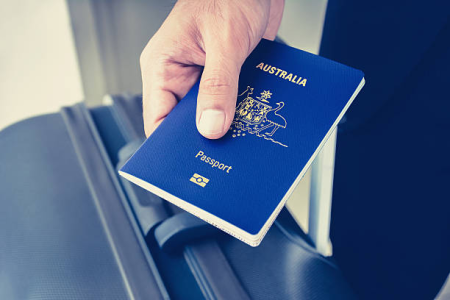Australian passport price climbs while visa-free access shifts worldwide
By
Gian T
- Replies 0
If you’ve been planning a big trip or have recently renewed your passport, you may have noticed a sting in your wallet — the cost of an Australian passport is higher than ever.
For the second year in a row, it now holds the title of the world’s most expensive passport.
The big question is whether the price matches the value, and how far your passport can actually take you without the extra hassle of applying for a visa.
First, the numbers. As of January, a standard 10-year Australian passport will set you back a whopping $412.
That’s an average of $41.20 per year—enough for a few nice meals out, or a decent bottle of wine!
This price reflects a 3.5 per cent increase in line with inflation, hot on the heels of a one-off 15 per cent hike in July last year.
All up, passport fees have jumped by a staggering 22.5 per cent under the current government.
For many of us, especially those on a fixed income or planning a special trip to see family or tick off a bucket-list destination, that’s a significant outlay.
As Opposition Senate Leader Simon Birmingham put it, 'Many Australians scrimp and save to afford a special holiday to Bali or Fiji, only to find the cost of a passport is similar to the cost of an airfare.'
So, what do you get for your $412? According to the Department of Foreign Affairs and Trade (DFAT), the high price is justified by the passport’s technological sophistication and anti-fraud measures.'
In other words, it’s a very secure document—though, as some have pointed out, the edges are still known to curl (not exactly the high-tech feature we were hoping for!).
The government also points to the number of countries you can visit visa-free as a selling point. But here’s where things get interesting…
While we’re paying top dollar, the Australian passport isn’t actually the most powerful in the world. In the latest global rankings, Australia comes in equal-seventh, offering visa-free access to 185 countries.
That’s nothing to sneeze at, but it’s a step down from last year, and we’re now behind 21 other countries—including the UK and New Zealand.
Singapore takes the crown, with its passport granting access to a staggering 193 countries without a visa. Japan and South Korea follow closely behind with 190.
So, while our passport opens a lot of doors, it’s not quite the golden ticket it once was.
Let’s do a little maths. At $412 for access to 185 countries, that’s $2.23 per visa-free country. Compare that to Mexico ($2.13), Fiji ($1.59), and the US ($1.38), and it’s clear we’re paying a premium for our travel freedom.
The government says the cost is necessary to cover the rising expenses of passport production, with Treasurer Jim Chalmers noting that last year’s increase will raise $349 million over three years.
But critics argue it’s a 'backdoor tax grab,' especially when many see a passport as a basic entitlement, not a luxury.
With over 15 million Australians holding a current passport (that’s more than 55 per cent of the population), this isn’t a niche issue.
For retirees and seniors, the cost can be a real barrier—especially if you’re planning to visit family overseas, take a long-awaited cruise, or simply want the peace of mind of having a valid passport 'just in case.'
Here’s the good news: with your Australian passport, you can still travel to 185 countries without needing to arrange a visa beforehand.
This includes most of Europe (thanks to the Schengen Agreement), the UK, much of Asia, and popular holiday spots like Fiji, Bali (Indonesia), and New Zealand.
However, there are still some destinations where you’ll need to jump through a few hoops—think the US (ESTA required), Canada (eTA), and China (full visa application).
It’s always worth checking the latest requirements before you book, as rules can change quickly.
 Have you been shocked by the cost of renewing your passport? Do you think it’s worth the price for the travel freedom it offers, or do you feel it’s become an unnecessary burden? And where’s the first place you’d go if money (and visas) were no object? Share your thoughts and travel stories in the comments below.
Have you been shocked by the cost of renewing your passport? Do you think it’s worth the price for the travel freedom it offers, or do you feel it’s become an unnecessary burden? And where’s the first place you’d go if money (and visas) were no object? Share your thoughts and travel stories in the comments below.
Read more: Are you overpaying? Aussies expose shocking truth behind world's second priciest passport!
For the second year in a row, it now holds the title of the world’s most expensive passport.
The big question is whether the price matches the value, and how far your passport can actually take you without the extra hassle of applying for a visa.
First, the numbers. As of January, a standard 10-year Australian passport will set you back a whopping $412.
That’s an average of $41.20 per year—enough for a few nice meals out, or a decent bottle of wine!
This price reflects a 3.5 per cent increase in line with inflation, hot on the heels of a one-off 15 per cent hike in July last year.
All up, passport fees have jumped by a staggering 22.5 per cent under the current government.
For many of us, especially those on a fixed income or planning a special trip to see family or tick off a bucket-list destination, that’s a significant outlay.
As Opposition Senate Leader Simon Birmingham put it, 'Many Australians scrimp and save to afford a special holiday to Bali or Fiji, only to find the cost of a passport is similar to the cost of an airfare.'
So, what do you get for your $412? According to the Department of Foreign Affairs and Trade (DFAT), the high price is justified by the passport’s technological sophistication and anti-fraud measures.'
In other words, it’s a very secure document—though, as some have pointed out, the edges are still known to curl (not exactly the high-tech feature we were hoping for!).
The government also points to the number of countries you can visit visa-free as a selling point. But here’s where things get interesting…
While we’re paying top dollar, the Australian passport isn’t actually the most powerful in the world. In the latest global rankings, Australia comes in equal-seventh, offering visa-free access to 185 countries.
Singapore takes the crown, with its passport granting access to a staggering 193 countries without a visa. Japan and South Korea follow closely behind with 190.
So, while our passport opens a lot of doors, it’s not quite the golden ticket it once was.
Let’s do a little maths. At $412 for access to 185 countries, that’s $2.23 per visa-free country. Compare that to Mexico ($2.13), Fiji ($1.59), and the US ($1.38), and it’s clear we’re paying a premium for our travel freedom.
The government says the cost is necessary to cover the rising expenses of passport production, with Treasurer Jim Chalmers noting that last year’s increase will raise $349 million over three years.
With over 15 million Australians holding a current passport (that’s more than 55 per cent of the population), this isn’t a niche issue.
For retirees and seniors, the cost can be a real barrier—especially if you’re planning to visit family overseas, take a long-awaited cruise, or simply want the peace of mind of having a valid passport 'just in case.'
Here’s the good news: with your Australian passport, you can still travel to 185 countries without needing to arrange a visa beforehand.
This includes most of Europe (thanks to the Schengen Agreement), the UK, much of Asia, and popular holiday spots like Fiji, Bali (Indonesia), and New Zealand.
It’s always worth checking the latest requirements before you book, as rules can change quickly.
Key Takeaways
- The Australian passport is now the most expensive in the world, costing $412 for a ten-year validity following recent price hikes.
- Despite the high cost, the Australian passport only grants visa-free access to 185 countries, ranking equal-seventh globally and falling behind passports like Singapore, Japan, the UK and New Zealand.
- The fee increases have come under fire, with critics labelling them a 'backdoor tax grab', while the government claims the costs cover advanced technology and anti-fraud measures.
- Over 15 million Australians currently hold a passport, but many are frustrated that the high fees make it a costly privilege, with some saying the price is comparable to an international airfare.
Read more: Are you overpaying? Aussies expose shocking truth behind world's second priciest passport!








